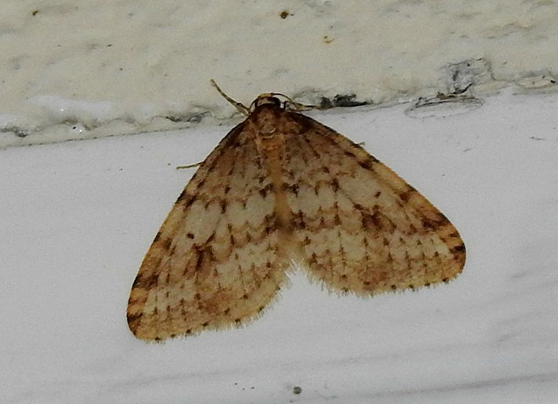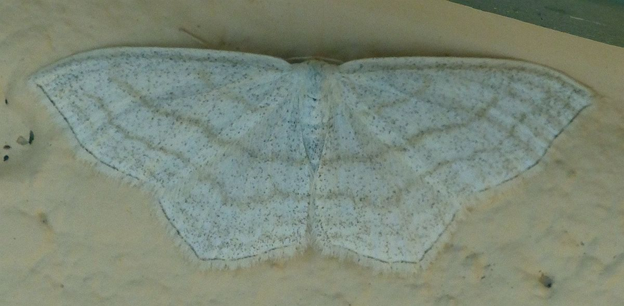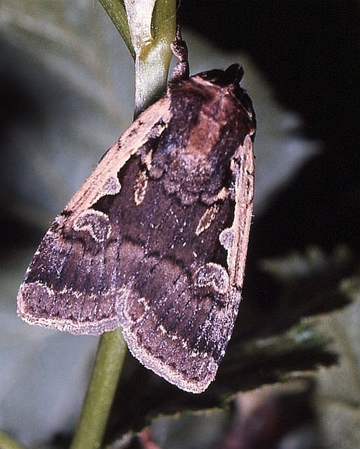2022 January 16
2022 January 16
Jeremy Tatum writes: I occasionally get a telephone call from someone who says s/he has an interesting moth at home, and could I identify it, please. On asking for a description, I may be told that it is brownish and greyish with spots and streaks. Needless to say, I can’t identify it from that! It is indeed difficult to describe the colours and pattern of a butterfly or moth wing. It helps if you are familiar with the “geography” of a wing, and I hope these notes will help a bit with that.
A moth has two pairs of wings – the forewings and the hindwings. And each wing has an upperside and an underside. The hindwings are also sometimes called the “underwings” – and this name occurs in the English name of some moths, such as the familiar Large Yellow Underwing. I prefer not to use the word “underwing”, because of possible (frequent!) confusion with “underside”.
A moth wing is roughly triangular in shape, and like any good triangle it has three sides and three angles, and it is helpful to know and to use the names of these sides and angles.
First, the sides.
There is the leading edge or costa.
Then the side farthest from the head is the outer margin or termen (adjective “terminal”)
And the side nearest the body is the inner margin.
The word “costa” is used quite a lot; the word “termen” not quite so much.
Now for the angles.
The angle nearest the head of the moth is the base, or the basal angle.
The tip of the wing is the apex. (Adjective “apical”)
The third angle is the inner angle or tornus.
Thus the outer margin is opposite the base.
The inner margin is opposite the apex.
The costa is opposite the inner angle.
The wing of a moth has a number of veins. (They are not veins in quite the same sense as the veins of mammals, but that is the word that is generally used.) There are various schemes for numbering and naming these veins. The venation scheme varies from Family to Family (not to mention from author to author!) but in a general way they usually start with 1 being the vein nearest the inner margin, and the number increasing as you move along the outer margin from tornus to apex.

Operophtera occidentalis Val George
The spaces between the veins are cells. You will see that most of the cells are “open”, because the veins come to an end at the outer margin. However, you will notice a large closed cell, starting narrowly near the base, widening and extending roughly parallel to the costa about 2/3 the length of the costa. This large cell is called the disc.
You’ll notice a small dark spot inside the disc. The presence or absence of a discal spot is sometimes helpful in identifying a moth. If I call the first easily-visible vein near the inner margin “1”, you will notice that the cell between veins 4 and 5 is darker than the two adjacent cells. That is one way in which I tell the difference between Operophtera occidentalis and O. brumata. The point here, however, is that you can already see how knowing the “geography” of a wing and the words to use helps in describing it.
Many moths, particularly geometrids, may have one or more transverse lines or cross lines crossing the wing roughly parallel to the outer margin. You can help to describe a moth by describing the colour, shape and width of these transverse lines, and where they are on the wing. If a line is close to the base of the wing, you can call it a basal cross line. If it goes smack across the middle of the wing, you can call it a medial cross line. If it is a little before the middle, it is an antemedial (am) line. If it is a little beyond the middle, it is a postmedial (pm) line. If it is just a little before you get to the outer margin (termen) it is a subterminal line.

Scopula quinquelinearia Jochen Möhr
In describing the moth above, I would say that there is a faint antemedial line (or, for short, a faint am line; some might describe it as a basal line), a prominent medial line, a pm line, and two close, faint, ill-defined subterminal lines. The outer margin is also delineated with a thin, dark line. Beyond the margin you will see a fringe of delicate hair-like scales. This fringe is called, unsurprisingly, the fringe. As for the shapes of these lines, you can say “wiggly” – though with a bit of imagination you may be able to do a little better than that.
A moth wing typically has a whole bunch of streaks and spots. Many moths, noctuids in particular, have a collection of three prominent spots (“stigmata” – singular “stigma”), easily recognizable by their characteristic shapes. There is a reniform stigma or spot (kidney-shaped), an orbicular stigma (more or less round), and a claviform stigma (supposed to be club-shaped, but in any case elongated). Not all are always present or obvious. A description of these three spots is often helpful.

Parabagrotis sulinaris Jeremy Tatum
The moth above has very obvious reniform and claviform spots. The orbicular spot may be that bump attached to the pale costal streak. These spots are in a dark central area bounded by the pale costal streak, a pale am line and a darker pm line. The pm line is proximally dark but pale distally. (See how the use of technical words actually helps in making a clear description.)
I’ll leave this moth with you, so you can practise describing it as best you can – in a way that is an improvement over “brownish and greyish with spots and streaks”. For example, have a go at describing the space between the postmedial and subterminal lines. And describe the terminal area. See the row of dark V-shaped marks at the termen. Und so weiter. Good luck.
